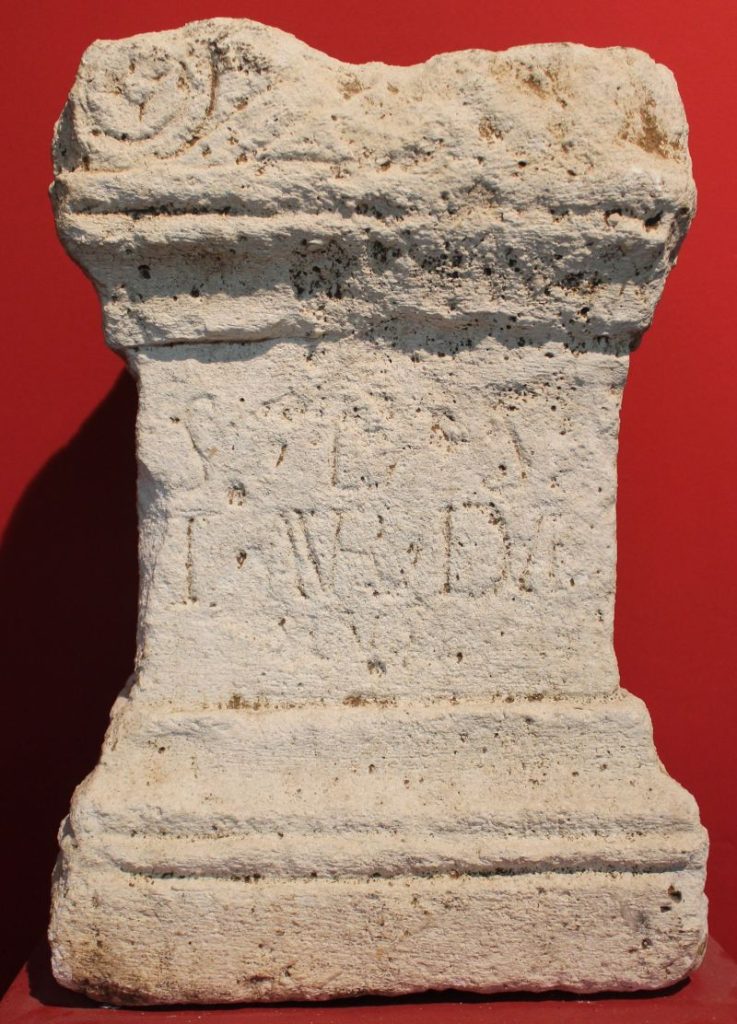The monumental structure of nearly 2000 years ago is located under the 18th century church – this breakthrough discovery, done with a ground-penetrating radar and a LIDAR laser scanner, is the work of a team of Polish and Croatian archaeologists, with Fabian Welc, PhD, University professor, in charge of managing the excavations in Dalmatia.
The tiny village of Danilo is only 15 km away from the Šibenik seaside resort. Here, in the 1950s, inscriptions dating back to the 1st/2nd century were discovered during a water mains development project. The excavations, focused on the eastern part of the village, around a modern cemetery and the 18th century St. Daniel’s church, revealed hundreds of such inscriptions. Among those, Croatian researchers found a mention of the lost town of Ridit, founded by a Romanized tribe of Ridits.
During the following years, an extensive medieval cemetery was gradually revealed, apparently dug directly into the relics of Roman buildings, including a bath house and a huge building with a central yard and a portico surrounded by numerous rooms.

– It has always fascinated me that reused fragments of architectural decoration and a large column was found in the stone walls encircling the medieval graves; they were originally parts of the arrangement of a Roman temple, the location of which has not yet been found – says Fabian Welc, PhD, University professor from the Institute of Archaeology of UKSW, leader of the research project on behalf of the Polish party. – The size of these items itself indicated that a monumental building must have been located near the cemetery, as part of a group of buildings encircling the ancient town’s forum, Latin: Municipium Riditarum.

A breakthrough discovery
Prof. Welc’s team first encountered traces of the ancient temple at the end of September this year. It turned out that under and around St. Daniel’s church, there were remnants of a structure with massive walls, with a rectangular contour (20 x 10 m) and a visible framing of the entrance in the form of a colonnade.
– I know every fig tree here, I’ve been searching the area one meter after another, unsuccessfully looking for the ruins of the forum and the temple – professor Welc says. – I remember this exactly, it was the last day of September and the last day of our work, when we found ourselves again at the medieval cemetery located next to St. Daniel’s church. Then all of a sudden we saw a very clear image on the ground-penetrating radar display, indicating the presence of a monumental architectural establishment, partially under the existing church. It seems that the people of Danilo must have known about the existence of the ancient temple since the Middle Ages. They were treating it as a source of construction materials and they were disassembling it systematically, using its parts to build sarcophagi, gravestone panels or olive oil presses, which is indicated by the remains of that structure, spread across the area of the old medieval cemetery.

So professor Welc, “our Indiana Jones”, was right: all the architectural pieces made of stone, which were found near the church for years, were remnants of a huge Roman building. The researchers were further supported by LIDAR, airborne laser scanning technology, offering the exact determination of the land profile. According to Doctor Ana Konestra, the Croatian project coordinator, the technology was also helpful in determining the locations of previously unknown Roman buildings, mainly with a residential and commercial function, in the vicinity of the Danilo church.
This phenomenal discovery sheds a new light on the history of the ancient Ridit, enabling scientists to determine the location of the forum at the crossing of the main circulation routes; it was a central spot of every Roman city. This is a culmination of the excavation process, continuing for seventy years. It is the first discovery of this kind in Croatia for years. It all began to come together into a logical whole. The huge building with a front yard, which was discovered many years ago and recognized as a mansion, turned out to be a part of the forum, just like the relics of the bath houses discovered earlier, which can now be considered public baths, an indispensable part of the infrastructure of a Roman town. Even now we can define the location of a basilica (courthouse) and curia (town council) with a large degree of probability, on the basis of the findings of prof. Fabian Welc’s team.
A temple for Jupiter, Rome, or Mitra?
We already know today that the existing 18th century St. Daniel’s church in Ridit was erected on the foundations of an earlier small Roman Christian temple. Below the latter, as it transpires from the latest research findings, there was the oldest Roman temple. A medieval cemetery, a burial site from the 9th to the 15th century, was built on the rubble of that Roman temple.

Next year, the scientists intend to pursue archaeological exploration to confirm the finding made with the ground-penetrating radar. A lot of questions still remain unanswered. To which deity was the ancient temple dedicated? Does it really originate in the 1st/2nd century, as we may speculate? Was it transformed into an early Christian church during the late Antiquity years, as was often the case? Will it be possible to recover parts of the ancient temple and make them available to tourists afterwards? An archaeological park project is expected to open for tourists, with the archaeological facilities that will serve future research at Danilo where the ancient town of Ridit was discovered.
Multidisciplinary project in the village of Danilo, Croatia, pursued since 2019 by researchers from the UKSW Institute of Archaeology, Zagreb Institute of Archaeology and Šibenik Museum, is funded by the National Science Centre (NCN) (grant no. 2020/37/B/HS3/02458) with the participation of the Croatian Institute of Archaeology.
 20 October 2022
20 October 2022








